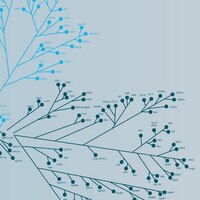Molecular cloning and characterization of the human NIMA-related protein kinase 3 gene (NEK3).
Kimura, M and Okano, Y
Cytogenet. Cell Genet., 95: 177-82 (2001)
2001
Show Abstract
NEKs (NIMA-related kinases) are a group of protein kinases sharing high amino acid sequence identities with NIMA (never in mitosis gene a) which control mitosis in Aspergillus nidulans. We have cloned a cDNA for human NEK3, a novel human gene structurally related to NIMA, by RT-PCR. Its open reading frame encodes a protein of 489 amino acid residues with the calculated molecular mass of 56.0 kDa and a predicted pI of 6.58. Phylogenetic analysis suggests that mouse and human NEK3s constitute a subfamily within the NIMA family of protein kinases. The expression pattern of NEK3 was studied by RT-PCR and a high level of expression was detected in testis, ovary, and brain, with low-level expression being detected in most of the tissues studied. NEK3 mRNA was detected in all the proliferating cell lines studied, and the amount did not change during the cell cycle. The human NEK3 gene was assigned to human chromosome 13 by somatic cell hybrids and 13q14.2 by radiation hybrid mapping. | 12063396
 |
Cloning and characterization of the murine Nek3 protein kinase, a novel member of the NIMA family of putative cell cycle regulators.
Tanaka, K and Nigg, E A
J. Biol. Chem., 274: 13491-7 (1999)
1999
Show Abstract
We have cloned and characterized murine Nek3 (NIMA-related kinase 3), a novel mammalian gene product structurally related to the cell cycle-regulatory kinase NIMA of Aspergillus nidulans. By RNase protection, low levels of Nek3 expression could be detected in all organs examined, regardless of proliferative index. In contrast to Nek1 and Nek2, Nek3 levels were not particularly elevated in either the male or the female germ line. Nek3 levels showed at most marginal variations through the cell cycle, but they were elevated in G0-arrested, quiescent fibroblasts. Furthermore, no cell cycle-dependent changes in Nek3 activity could be detected, and no effects upon cell cycle progression could be observed upon antibody microinjection or overexpression of either wild-type or catalytically inactive Nek3. Finally, Nek3 was found to be a predominantly cytoplasmic enzyme. These data indicate that Nek3 differs from previously characterized Neks with regard to all parameters investigated, including organ specificity of expression, cell cycle dependence of expression and activity, and subcellular localization. Hence, the structural similarity between mammalian Neks may not necessarily be indicative of a common function, and it is possible that some members of this kinase family may perform functions that are not directly related to cell cycle control. | 10224116
 |
NIMA-related kinases: isolation and characterization of murine nek3 and nek4 cDNAs, and chromosomal localization of nek1, nek2 and nek3.
Chen, A, et al.
Gene, 234: 127-37 (1999)
1999
Show Abstract
The Aspergillus NIMA kinase plays a key role in controlling entrance into mitosis, and recent evidence suggests that mammalian NIMA-related kinases perform similar functions. We report here the cloning of the mouse nek3 and nek4 genes. Mouse nek3 is probably the ortholog of the partially sequenced, human nek3, whereas murine nek4 cDNA is probably the ortholog of human STK2. Nek4 is highly conserved between mouse and human, whereas Nek3 is somewhat less conserved (96.5 and 88% identity in the kinase domains, respectively). Northern analysis shows preferential expression of nek3 in mitotically active tissue, whereas nek4 is highly abundant in the testis. Within the developing testicular germ cells, in-situ analysis demonstrated that nek1, 2 and 4 exhibit differential patterns of expression, suggesting overlapping, but non-identical functions. Linkage analysis, using the mouse recombinant inbred strain panel (BXD), was used to localize nek1, 2 and 3. nek1 was mapped between Cpe and D8Mit8 on chromosome 8 at around 32cM, nek2 was mapped to the distal region of chromosome 1, and nek3 was mapped to the most centromeric region of chromosome 8. | 10393247
 |





















